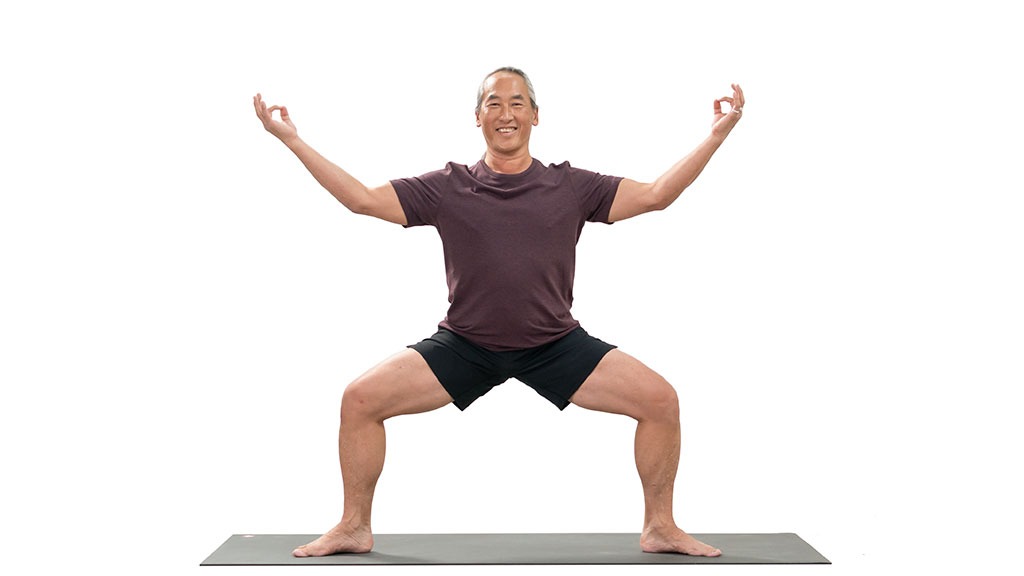Introduction
Yoga is more than just stretching — it's a path to balance, strength, and mental clarity. Among the various poses that blend grace with grounding is the Temple Pose, also known as Goddess Pose or Utkata Konasana in Sanskrit. While not as commonly spotlighted as Downward Dog or Warrior, Temple Pose Yoga is a powerful stance that combines lower body strength with mindful breathing, making it a favorite in both traditional and modern yoga practices.
In this blog, we’ll explore the origins, benefits, steps, tips, and frequently asked questions about Temple Pose Yoga to help you integrate this grounding pose into your practice.
What is Temple Pose Yoga?
Temple Pose, also called Goddess Pose, is a standing asana that emphasizes wide-legged squatting with arms raised, evoking the image of a powerful and poised figure. It’s a pose that encourages openness in the hips, strength in the thighs, and mental focus — much like a temple stands tall and centered amidst life’s chaos.
Benefits of Temple Pose Yoga
Practicing Temple Pose Yoga regularly can bring a range of physical, emotional, and energetic benefits:
- Strengthens Lower Body
- It tones the thighs, glutes, calves, and hamstrings, building endurance and stability.
- Opens Hips and Pelvis
- A fantastic pose for hip mobility, it gently stretches the inner thighs and groin.
- Improves Balance and Posture
- Engaging the core and spine promotes better alignment and posture.
- Boosts Circulation and Energy Flow
- Activates the root and sacral chakras, grounding your energy and enhancing emotional release.
- Supports Women’s Health
- Often recommended in prenatal yoga, it can help prepare the pelvis for childbirth and relieve menstrual discomfort.
How to Do Temple Pose Yoga (Step-by-Step)
- Start Standing: Begin in Mountain Pose (Tadasana) at the top of your mat.
- Step Wide: Step your feet 3–4 feet apart, turning your toes out at about a 45-degree angle.
- Bend Your Knees: Sink your hips down like you’re sitting into a squat. Ensure knees are aligned over your ankles.
- Raise Your Arms: Lift your arms to shoulder height, elbows bent, palms facing forward (like a cactus).
- Engage the Core: Tuck the tailbone slightly and lengthen the spine.
- Hold the Pose: Stay here for 5–10 breaths, deepening the squat with each exhale if comfortable.
- Release: Straighten the legs and return to standing.
Pro Tips for Practicing Temple Pose
- Keep your knees tracking over your toes to avoid strain.
- Don’t arch your lower back — engage your core to support the spine.
- Press evenly through your feet, especially the heels.
- Beginners can place hands on hips or thighs for support.
- Want to deepen the pose? Try pulsing or holding longer to build endurance.
Conclusion
Temple Pose Yoga is a beautiful blend of strength, stability, and spiritual connection. It helps practitioners tap into their inner power while grounding their energy through mindful movement. Whether you're a beginner or a seasoned yogi, adding this pose to your practice can help cultivate confidence, flexibility, and resilience — both on and off the mat.
FAQs About Temple Pose Yoga
1. Is Temple Pose the same as Goddess Pose?
Yes, they are the same. "Temple Pose" is a more poetic term often used to reflect the spiritual energy of the pose, while "Goddess Pose" is the more commonly used name in modern yoga.
2. Can beginners do Temple Pose?
Absolutely! Just start slowly and use props like a wall or blocks if needed. It's a great pose to build strength and flexibility over time.
3. Is Temple Pose safe during pregnancy?
Yes, it’s often included in prenatal yoga classes. However, pregnant practitioners should practice under the guidance of a certified instructor.
4. How long should I hold Temple Pose?
Start with 3–5 breaths and gradually work up to 10–15 breaths or longer as your strength improves.
5. What chakras does Temple Pose activate?
Temple Pose primarily activates the Root (Muladhara) and Sacral (Svadhisthana) chakras, helping with grounding, creativity, and emotional balance.





Comments